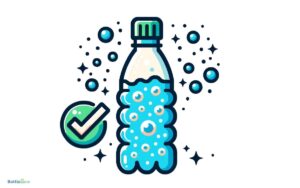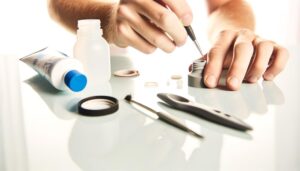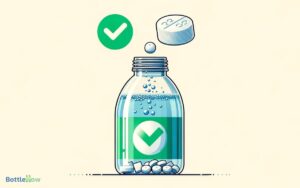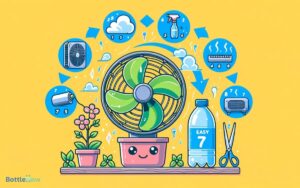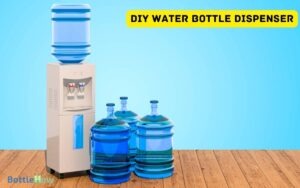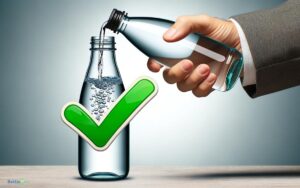Can Cats Drink From Rabbit Water Bottle: Pet Hydration Guide
You can let your cat drink from a rabbit water bottle, but there are several considerations. These bottles maintain water cleanliness by preventing spillage and contamination.
However, the ball-bearing mechanism can disrupt a cat’s natural lapping and may frustrate them due to limited water flow. Cats typically prefer running water and have a low thirst drive, risking dehydration with inadequate intake.
While rabbit water bottles offer some hygiene benefits, they’re not suitable for cats’ hydration needs. Exploring other methods like water fountains or multiple bowls could be more effective in keeping your feline hydrated and healthy.
Discover diverse strategies to guarantee ideal hydration for your pet.
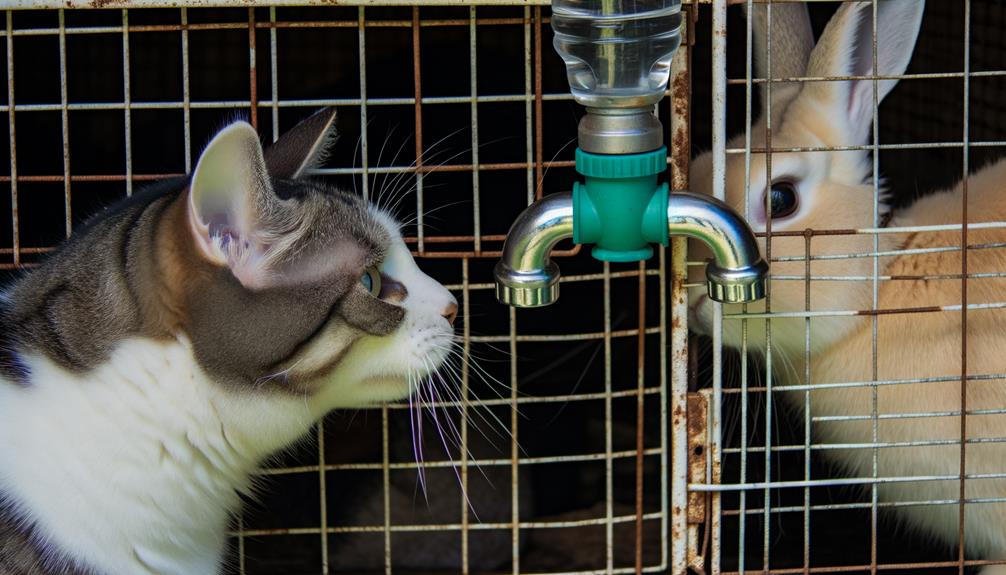
Key Takeaways
- Rabbit water bottles can disrupt a cat’s natural lapping mechanism, making it difficult for them to drink.
- The limited flow rate of rabbit water bottles may frustrate cats, potentially leading to dehydration.
- Rabbit water bottles are designed for small animals and may not suit the ergonomic needs of a cat’s jaw structure.
- Using rabbit water bottles for cats can reduce contamination and keep water clean but might not fulfill their hydration needs.
Understanding Rabbit Water Bottles
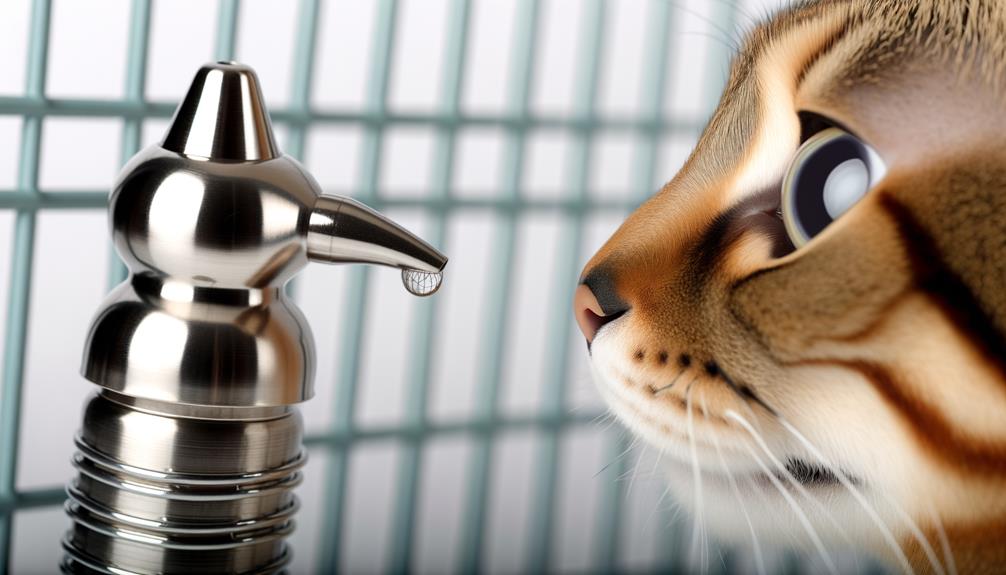
Rabbit water bottles, designed to dispense water through a ball-bearing mechanism, guarantee a steady and uncontaminated water supply for small animals. This mechanism relies on gravity and the animal’s licking action to release water, ensuring minimal bacterial contamination.
It’s vital to understand that these bottles are engineered to support small mammals’ specific hydration needs. Research indicates that the ball-bearing mechanism reduces the risk of waterborne illnesses compared to traditional water bowls.
The bottle’s design prevents spillage and maintains water cleanliness, which is particularly beneficial in environments where hygiene is paramount. Frequent cleaning and regular water changes are essential to maintain the efficacy of this apparatus.
Understanding these details helps you appreciate why rabbit water bottles are a preferred choice for small animal hydration.
Differences Between Cats and Rabbits
To understand why cats might use a rabbit water bottle, you need to examine their dietary needs, behavioral patterns, and hydration habits.
Cats are obligate carnivores with specific protein requirements, whereas rabbits are herbivores with a diet high in fiber.
Additionally, cats exhibit territorial behaviors and spontaneous drinking patterns, contrasting with the more consistent and routine hydration habits of rabbits.
Dietary Needs Comparison
Understanding the stark differences in the dietary needs of cats and rabbits is essential for ensuring their ideal health and well-being.
Cats are obligate carnivores, requiring a diet rich in animal protein, taurine, and specific fatty acids found exclusively in meat. They can’t synthesize certain essential nutrients, making animal-derived components critical.
In contrast, rabbits are herbivores, thriving on a high-fiber diet primarily consisting of hay, vegetables, and specialized pellets. Their gastrointestinal tract is adapted for continuous digestion of fibrous plant material, and a carnivorous diet would be detrimental.
Misaligning these diets can lead to severe health complications, including nutrient deficiencies and digestive issues.
As a result, understanding and respecting these dietary distinctions is essential for the proper care of both species.
Behavioral Differences Overview
How do the behavioral patterns of cats and rabbits diverge, and what implications does this have for their respective care and interaction?
Cats exhibit predatory instincts, often engaging in solitary hunting behaviors and displaying territoriality. They require environmental enrichment to satisfy their need for stimulation and exercise.
In contrast, rabbits are prey animals, inherently more skittish and prone to stress. They thrive in stable, quiet environments and benefit from social interactions with other rabbits.
Understanding these fundamental differences helps you tailor your approach to their care. For example, while a cat might enjoy interactive toys and climbing structures, a rabbit needs secure hiding spaces and gentle handling.
Proper behavioral accommodation guarantees both pets’ mental and physical well-being.
Hydration Habits Analysis
While cats and rabbits both require adequate hydration for ideal health, their drinking habits and preferences considerably differ due to their distinct evolutionary backgrounds.
Cats, primarily desert dwellers, have evolved to obtain most of their moisture from prey. In contrast, rabbits, being herbivores, rely on high-water-content vegetation. Understanding these differences can help you cater to their specific needs:
- Water Source Preference: Cats prefer running water, often rejecting stagnant water.
- Hydration Method: Cats lap water, while rabbits use a sipping mechanism.
- Fluid Intake Frequency: Cats drink less frequently but in larger amounts; rabbits sip consistently.
- Environmental Adaptation: Cats have more concentrated urine, conserving water.
Recognizing these habits is essential for their well-being.
Pros of Using Rabbit Water Bottles for Cats
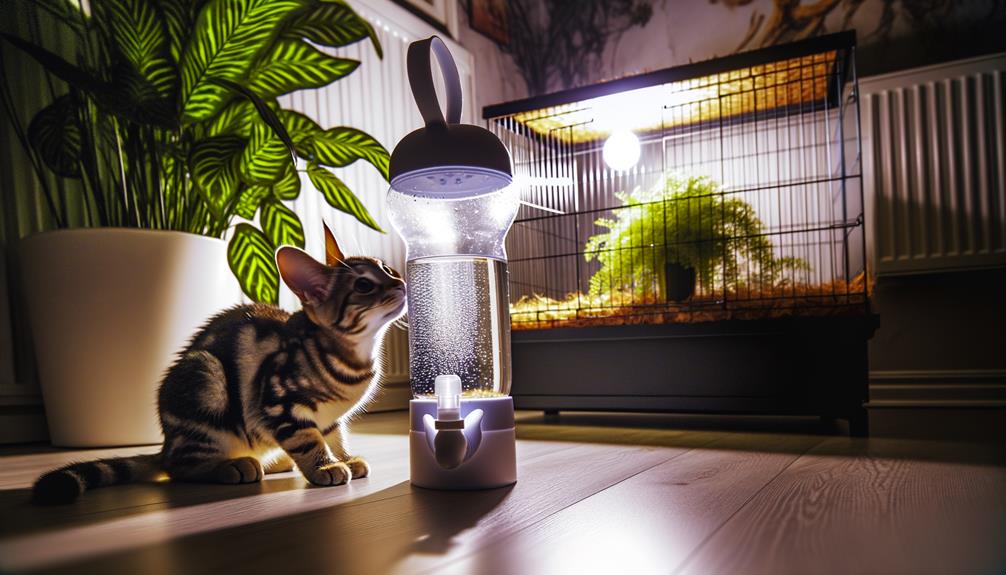
Using rabbit water bottles for cats offers several advantages:
They provide a spill-free hydration solution, making it easier to maintain a clean environment.
You can also easily monitor your cat’s water intake, ensuring they stay properly hydrated.
Additionally, these bottles prevent contamination, reducing the risk of bacterial growth in their drinking water. This ensures that the water remains fresh and safe for consumption, even after extended use. However, some new bottles may have a slight residue that affects the flavor, leading users to seek solutions on how to remove plastic taste from their containers. Proper cleaning methods, such as soaking in a mixture of vinegar and water, can help eliminate unwanted odors and improve the drinking experience.
Spill-Free Hydration Solution
Adopting rabbit water bottles for your cat can markedly reduce spillage and maintain a cleaner hydration area. This method offers several advantages grounded in clinical evidence and expert recommendations. You’ll find that a spill-free hydration solution isn’t just convenient but also beneficial for both you and your feline companion.
Hygiene Improvement: Keeps the water clean and free from contaminants.
Reduced Bacterial Growth: Minimizes stagnant water, preventing bacterial proliferation.
Convenience: Less frequent cleaning of the hydration area required.
Behavioral Benefits: Discourages water play, reducing mess.
Space Efficiency: Compact design saves space in your home.
Easy to Monitor
One significant advantage of rabbit water bottles for cats is the ease with which you can monitor their water intake.
Traditional bowls make it hard to gauge how much your cat drinks daily. However, rabbit water bottles come with clear, graduated markings, allowing you to measure the exact volume consumed.
Monitoring hydration is vital for early detection of health issues like kidney disease or diabetes. By tracking intake, you can confirm your cat is drinking sufficient water, which is essential for maintaining peak health.
Additionally, it’s easier to spot deviations from their usual patterns, enabling timely veterinary intervention if needed. This precise monitoring guarantees your cat receives the necessary hydration, contributing to their overall well-being.
Prevents Contamination
In addition to facilitating precise monitoring, rabbit water bottles considerably reduce the risk of contamination, ensuring your cat’s water remains clean and free from debris.
By providing a closed system, these bottles minimize exposure to environmental contaminants. This system effectively prevents:
- Bacterial growth: Reduced microbial contamination due to limited exposure.
- Pest intrusion: Keeps insects and other pests away from the water.
- Debris accumulation: Stops fur, dust, and food particles from entering.
- Water wastage: Limits spillage, maintaining hydration levels.
Clinical studies support using closed water systems for pets to maintain ideal hydration while minimizing health risks.
Cons of Using Rabbit Water Bottles for Cats
Although rabbit water bottles can be convenient, they often fail to meet the hydration needs of cats due to their different drinking behaviors and physical anatomy.
Cats lap water using their tongues, creating a column of liquid that they pull into their mouths. This natural lapping mechanism is disrupted by the spout of a rabbit water bottle, making it difficult for cats to drink efficiently.
Additionally, the limited flow rate of these bottles can frustrate cats, potentially leading to dehydration. The ergonomic design of a rabbit water bottle is also not suited for a cat’s jaw structure, creating discomfort during drinking.
Studies indicate that inadequate hydration in cats can lead to urinary tract issues and kidney problems, underscoring the importance of proper water access.
Alternative Hydration Methods for Cats
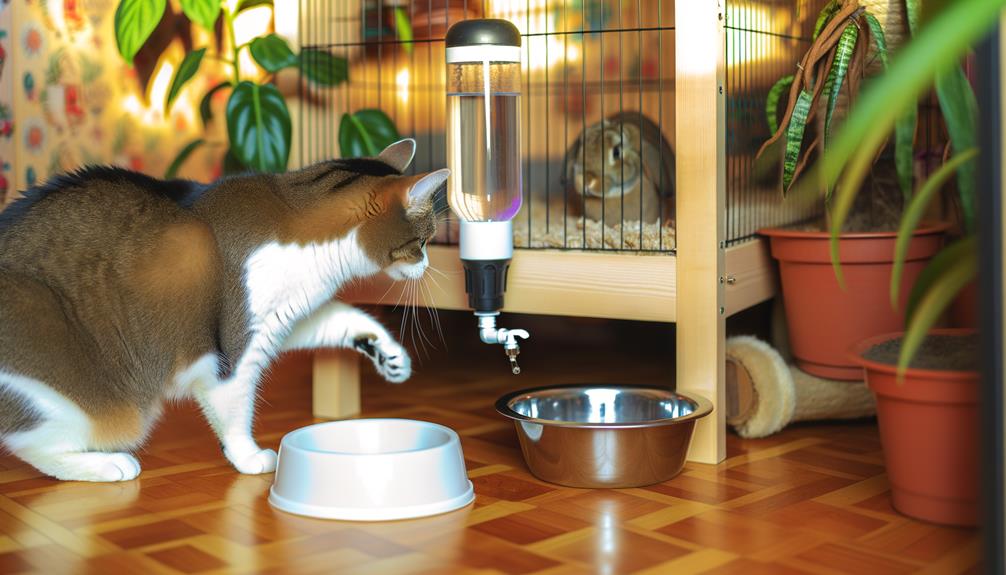
Given the challenges rabbit water bottles present, exploring alternative hydration methods for cats becomes imperative to guarantee their ideal health and well-being. Confirming your cat has access to fresh water can prevent dehydration and urinary tract issues.
Here are evidence-based methods to keep your cat hydrated:
- Water Fountains: Encourages drinking by providing a continuous flow of fresh water.
- Multiple Water Bowls: Placing bowls in various locations increases accessibility.
- Wet Cat Food: Contains high moisture content and contributes to overall hydration.
- Broth: Offering low-sodium broth can entice your cat to drink more.
These methods, grounded in clinical recommendations, confirm your cat stays adequately hydrated.
Tips for Successful Transition
To guarantee a smooth change to alternative hydration methods, start by gradually introducing new options alongside their current water source. Monitor your cat’s water intake closely to confirm they’re adapting well. Use positive reinforcement to encourage the use of the rabbit water bottle. Patience is key; sudden changes may cause stress and disrupt hydration.
| Step | Action |
|---|---|
| Gradual Introduction | Offer both water sources simultaneously |
| Monitoring Intake | Track daily water consumption |
| Positive Reinforcement | Reward with treats when using new source |
| Patience | Allow ample time for adaptation |
These steps will aid in a seamless change, enhancing your cat’s hydration without causing undue stress. Consult your veterinarian for personalized advice to suit your cat’s specific needs.
Conclusion
So, should your feline friend sip from a rabbit water bottle? Absolutely not!
While it might seem like a quirky solution, the reality is far from satisfactory.
Cats and rabbits have vastly different hydration needs and drinking behaviors.
Opt for a cat-specific water fountain or bowl to guarantee your furry companion stays ideally hydrated.
Trust the experts: your cat will thank you with purrs and cuddles, not dehydration and frustration.
Make the wise choice for your pet’s well-being!

